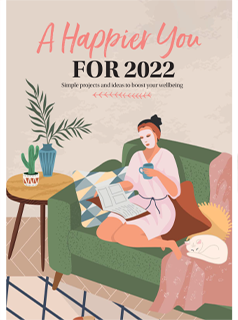Lynne Robinson, founder of Body Control Pilates and author of Pilates For Life , reveals her top three moves to help beat germs
Famous for improving posture, joint mobility and core stability, Pilates exercises also help to make your lymphatic and respiratory systems more efficient, which is crucial to a strong immune system.
Scarf Breathing
Pilates breathing can help boost overall health. You must create space for the ribs to expand, by standing or sitting tall, then breathe wide and deep into your back and sides, maximising lung capacity. The use of the scarf in this move gives you sensory feedback to help you feel your ribcage expanding and closing with your breath
How to do it: Sit or stand tall and wrap a scarf or stretch band around the lower part of your ribs, crossing it over at the front. Hold the opposite ends of the scarf and gently pull it tight.
Inhale and as you breathe in, focus on the back and the sides of the ribcage where your lungs are located. Like balloons swelling gradually with air, your lungs will expand and widen the walls of your ribcage. Do not be tempted to force this inhalation as you will only create tension. You should feel the scarf tightening as your ribs expand. It is not only the filling up of the lungs that expands your ribcage, but also the descent of the diaphragm, lowering into your abdominal area. Therefore your abdominal area will extend outwards. Try to breathe in through your nose and keep your shoulders relaxed.
Then exhale. As you breathe out, feel the air gently being pushed out fully as if from the very bottom of your lungs and eventually exit your body via your mouth with a deep sigh. You may also breathe out through your nose if it feels more natural. Your diaphragm will begin to rise and you should feel your ribcage beginning to close as your lungs empty. Do not puff your cheeks or purse your lips, as this will tense the neck, jaw and face which wastes energy.
Breathe in for up to a count of five and out fully for up to a count of five.
The Relaxation Position
Use this wonderful exercise to remind yourself of the fundamentals of Pilates alignment, breathing and centering and also to help release unwanted tension. It is also the starting position for many other exercises so master this starting block to aid your Pilates journey.
How to do it: On a mat, lie on your back with your knees bent, feet hip-width apart and parallel. Have a folded towel under your head to keep your head and neck in line with your spine. Check that your pelvis is level and your spine retains its natural curves. Keep your arms lengthened by your sides or resting on your abdomen.
Breathe wide into the ribcage. Then breathe out, and gently engage your pelvic floor muscles drawing from back to front and up inside like an ‘internal zip’ until you feel your lower abdomen hollow slightly. This connects your core muscles.
Repeat but this time try adding a few breaths as you hold the ‘internal zip’ before releasing.
Chin Tucks and Neck Rolls
There are a lot of lymph nodes around the neck and collarbones, so to boost your immune system we need to gently mobilise the area.
How to do it: In the relaxation position breathe in, preparing your body to move. Then breathe out as you lengthen the back of the neck and nod your head forwards, drawing the chin down. Make sure you keep your head in contact with the mat.
Then breathe in as you tip your head back gently, passing through the mid-position without stopping, to slightly extend your neck. Once again keep the back of the head in contact with the mat as the chin glides upwards. This is a small and subtle movement.
Repeat five times and then find the mid-position where your head is neither tipped back or forwards and your neck is neither flexed nor extended. This is neutral, with your face and your focus both directed towards the ceiling.
Breathe out as you keep your neck released and roll your head to one side. Again, make sure that you keep your head in contact with the mat. Then breathe in as you roll your head back to the centre.
Repeat on the other side. Practise the neck roll up to five times before returning your head back to the centre with even length on both sides of your neck.























